A fourth industrial revolution (hereafter IR4), based on nanotechnology, artificial intelligence and robotics, was declared at the 2016 World Economic Forum in Davos.
This four-part series will suggest for readers of The Square, a basis for acquiring a 21st Century Masonic Mindset, hopefully, it will lead to a future-proofing of ‘Freemasonries’.
The term ‘Freemasonries’ will be employed to indicate that there is not a homogenous Freemasonry beyond the specificity of Jurisdictions.
Influenced by the universally recognised works of Yuval Noah Hariri (2014-9); and, Andreas Önerfors’ Freemasonry: A Very Short Introduction, (OUP, 2020), these articles will be titled:-
(i) Freemasonries and governance;
(ii) Freemasonries and religiosity;
(iii) Freemasonries and the Fourth Industrial Revolution; and,
(iv) Freemasonries universal: towards a universal civil society.
Towards a 21st Century Masonic Mindset: Science & Citizenship.
Part 2: ‘Freemasonries’ and Religiosity.
By taking account of such New Testament texts as, ‘our citizenship is in Heaven’, ‘we are ambassadors for Christ’ and ‘obey God rather than man’, some early Christians were characterised by their refusal to accept Roman citizenship.
Constantine’s ‘harmonisation’ of the Christianity story and its assimilation within the Roman Empire, Nicene C.E. 325, seemingly accommodated this little local difficulty.
State and Church were further cemented with the Holy Roman Empire (HRE) C.E. 800, but subsequently checked by The Great Schism of 1504, The Reformation in 1517 and the dissolution of the HRE in 1806.

Constantine the Great, bronze statue outside York Minster
By NewTestLeper79
IMAGE LINKED: wikimedia Attribution 4.0 International (CC BY 4.0)
If in a nation state with an established religion (a constitutional deity?) there are those with an alternative ‘denomination or persuasion’, it could give rise to questions regarding their citizenship and first loyalty.
Just as 18th Century lodge rooms were schoolrooms for assimilating science and citizenship, the implications of the Fourth Industrial Revolution (IR4) require this again; Masonic ‘daily advancement’ for real in 21st Century format.
The view could be taken that with the 1738 Papal Encyclical In eminenti apostolatus specula, if not before, ‘Freemasonries’ and religions were, and remain, as tectonic plates in collision.
The scientific methodological basis of the technology underpinning the first three industrial revolutions altered understandings of the origin and workings of the physical universe.
So much so that other than from some pockets of fundamentalism religious authorities, with their religious meanings, now refrain from condemning claims about the universe emanating from scientific methodology.

Giordano Bruno
IMAGE LINKED: wikimedia Attribution 4.0 International (CC BY 4.0)
That is to say, those who teach that the earth revolves on its axis in its orbit around the sun are now unlikely to have their books burnt or their bodies burned at the stake as was Giordano Bruno in 1600.
Or, suffer house-arrest as Galileo did from 1623, after writing:
‘I hold the sun to be situated motionless in the centre of the revolution of the celestial orbs while the earth rotates on its axis and revolves about the sun.’
The science underpinning IR4, nanotechnology, artificial intelligence and robotics is challenging the very basis of revealed religions; their narrations on what it is to be ‘human’; concepts of the ‘individual’ and ‘the self’; and what as a species, ‘Sapiens’, seemingly, are in an irreversible process of becoming.
With 2016 Prestonian authority it was suggested:
‘…300 years ago…we find Freemasonry …representing and expressing the political and religious views of a core group at its centre’.
This is unreasonable to doubt; also that it was so, and remains so, for all Freemasonries.
Within Grand Lodge of England’s first decade, men of the Jewish faith community were initiated, clearly demonstrating that it was not Christian-only; and as part of the Imperial imperative, followed the initiation of ‘Mahometans’, Hindus, Parsis, Sikhs et alia.
However, the ‘core group’ included Anglicans, Presbyterians and Roman Catholics; also and significantly, deists from the scientific community.

Rt.W.Bro K.R. Cama (1831-1909) Parsi and Orientalist Scholar.
IMAGE LINKED: wikimedia Attribution 4.0 International (CC BY 4.0)
An atheist is someone who does not believe in entities or events described within a ‘supernaturalist’ nomenclature.
It is unlikely that every atheist or irreligious person is either ‘stupid’ or ‘libertine’ or both.
It may seem strange that some Freemasonries which claim to be secular, can exclude intelligent and moral atheists.
An agnostic is someone who does not know; yet even if intelligent and moral, would also be excluded from some Freemasonries.
However, the Freemasonries defining themselves apropos religions will have an understanding/definition of ‘religion’.
How might this be decided and fixed for all time as an ‘absolute’ which ‘admits of no compromise’?
And having done so, how can the management of Freemasonries tie the hands of future management?
A leitmotiv of this series is to recognise that Charges and Constitutions have been changed many times and to suggest that, as driven by IR4, further revision is required in order for Freemasonries to be fit for 21st Century purposes.
There are two principal usages of the term ‘religion’:
(i) A belief system which, necessarily, includes entities, concepts within a supernaturalist, nomenclature;
(ii) a belief system without supernaturally based content.
Both seek to provide moral compasses and outside of family and work usually can provide infinite, if not more, opportunities for occupying a person’s time, mind, and money: Freemasons can be found in both.
People have coagulated around stories, invented charges, constitutions, and Masonic jurisdictions; in so doing, have defined their ‘Freemasonry’.
This usually states if membership was;
(a) necessarily open-only to people with a religion – although unspecified;
(b) open-only to people with a specified religion;
(c) not have a religious requirement.
It may seem strange that some Freemasonries per (a) and (b) claim to be secular.
Some Freemasonries per (b) are restricted to Christian-only yet ‘recognised’ by (a).
Would Freemasonries Jewish-only or Muslim-only, be recognised by (a)?
Would a ‘Freemason’, a member of the Unitarian faith community, be accepted in a Christian-only jurisdiction?
It may seem strange that there is recognition between some (a) and (b) Freemasonries yet it would not have been possible for Bro Cama from a ‘Freemasonry’ (a) to have joined a Christian-only ‘Freemasonry’ per (b).
There is so much similarity in practice between Freemasonries and so much they could achieve together; yet arising from religious membership criteria, they remain at a perpetual distance. This will be addressed in Part 4.
The original core group at the centre of the original Grand Lodge of England included deists, they were comfortable with the concept of ‘TGAOTU’ and likely understood the term per proto-Freemason John Toland’s, ‘The sun is my father, the earth my mother; the world is my country and all humankind my family’.
Deists would understand ‘architect’ as a ‘power’ concept behind the construction of a building and that once completed, would no longer be active.
Three of the world’s major religions are ‘revealed’ as defined by faith in a ‘sacred’ text.
Without supernaturalist nomenclature, deism claims a rational understanding of natural phenomena.
Neither then, nor now, would Deists recognise the concept of either ‘the’, or ‘a’ Supreme Being.
Invented and introduced, long after the 1723 Constitutions, the term denotes theism, belief in a personal deity known by supernatural revelation.
Yet, the requirement for belief in the/a Supreme Being morphed from ‘essential’ to ‘absolute’ and it may seem strange that the terms ‘TGAOTU’ and ‘the/a Supreme Being’ can co-exist whilst having incommensurate denotations.
Indeed, Grand Officer and President of The Royal Society, Martin Folkes, was described by fellow Freemason Dr William Stukeley FRS as, ‘In matters of religion an errant infidel [unbeliever] & loud scoffer’.
(See Charles C Lawrence, The Key to Modern Freemasonry – link to Amazon at the end of this article)

John Toland (1670-1722) a proto-Freemason, wrote, Christianity Not Mysterious. Although burnt by the Common Hangman, it was a favourite book of Grand Master, The Duke of Sussex.
IMAGE LINKED: wikimedia Attribution 4.0 International (CC BY 4.0)
Just as some Freemasonries are exhorted to avoid discussions of ‘politics’ (ideologies); similarly, some are not to be, ‘intervening in the field of dogma or theology’.
Yet it may seem strange to the 21st Century mind that some Freemasonries define a Supreme Being as having a specific gender.
In his 1985 Hibbert Lecture (the Church of England’s equivalent to Prestonian) the Bishop of Durham said, ‘He and She and It for how can gender pronouns be sufficient for the mystery of God?’
Seemingly, only one of the world’s three major revealed religions is without a record of hostility/ambivalence toward Freemasonries.
This shortage of endorsement possibly arises from Freemasonries being regarded as competing for peoples’ time, mind, and money.
Also, claims that Freemasonries can make religious people better through the promotion of a Masonic lay religiosity, might not sit well with religious leaderships.
If as considered in Part 1, a constitutional monarchy was constitutionally replaced with republican governance, it might not retain an established church: how would this impact on 21st Century Freemasonries?
In the early 21st Century, a Province generously supported a cathedral renovation scheme.
Mainstream media aired the tension between a grateful Dean and an antipathetic Bishop. (Perhaps the Church does not ‘sanctify all it receives’?)
Perhaps Masonic support for such a scheme could be understood as not ‘supportive of religion’ but rather, supportive of civic historical architectural heritage?
If a ‘Freemasonry’ is deemed secular and neither a religion nor a substitute for religion, perhaps it is time for this to inform priority, policy, procedure, and practice; and, for supernaturalist-based nomenclature to be replaced.
If a Freemason required to believe in a Supreme Being ceases to do so, but wishes to remain, how might this be handled?
Who, if anyone, should be informed? If a request to remain is refused, could it be a case for Human Rights/Equalities Acts intervention?
Perhaps such brethren could, openly, be permitted to remain.
Also, permit the initiation of deists and agnostics as of the latter, there is nothing dishonourable about not knowing.
This could be regarded as a positive step towards a 21st Century Masonic Mindset based on science and citizenship – and when conjoined – humanity, for the universe exists as does the stewardship thereof.
In Part 3 there will be a consideration of the scientific methodology underpinning IR4: Nanotechnology – molecular-level physics and manufacture; Artificial Intelligence – intelligence without consciousness; and, Robotics – white collar robots.

Data Centre
IMAGE LINKED: wikimedia Attribution 4.0 International (CC BY 4.0)
If DNA can be understood as a set of instructions, similarly algorithms, can organisms be understood as algorithms and thereby capable of being externally programmed and hacked?
Or worse, the British Prime Minister recently told student citizens that their A Level grades were, ‘almost derailed by a mutant algorithm’!
Only Freemasonries with mind sets thus informed will have the working tools to serve their generation, the 21st Century.
The very recent ‘relationship’ with Zoom might be an indicative step in this direction.
No longer more of the same but rather, ‘and now for something completely different’.
Article by: Gerald Reilly

Gerald Reilly was initiated in 1995 into St Osyth's Priory Lodge 2063. Essex. England (UGLE).
He was a founder member of Josh Heller's Allthingsmasonic, and with Josh co-wrote 'The Temple that Never Sleeps' (Cornerstone Books, 2006) he is committed to the development of e-Freemasonry.
Awarded the Norman B Spencer Prize, 2016.
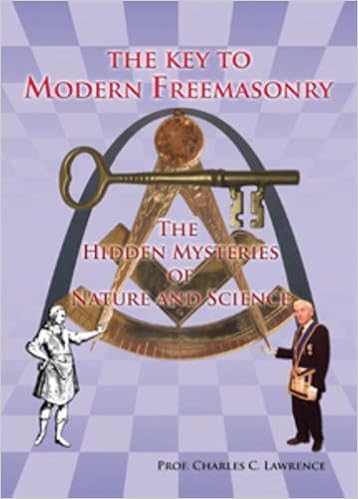
The Key to Modern Freemasonry: The Hidden Mysteries of Nature and Science
by Professor Charles C. Lawrence
For a short period in the early 1700s a preponderance of the leading men of English science happened to be, or would soon become, members of one of the Freemasons lodges in and around London (Ninety-two were members of the Royal Society from 1720-1740 [‘Freemasons who are or were Fellows of the Royal Society …’, paper prepared by Bruce B. Hogg (2009), for the Masonic Yearbook Historical Supplement ] ).
Such was the strength of that bond of that truly committed caucus that they went on to found the Premier Grand Lodge and leave in perpetuity their scientific imperative upon it.
No-one can be made a Freemason without professing a belief in a Supreme Being, but immediately he is admitted he is informed that the only way he may become a fit member of organised society (and particularly Freemasonry), is through education.
On that day as a final recommendation he is told that he must study the Liberal Arts and Sciences and from this injunction there is no let-up throughout the whole of his ceremonial journey, including his progression through the Holy Royal Arch.
Even after attaining the highest position possible he is informed that he is now considered to be a ‘Master of the Liberal arts and Sciences’ and in the Address to him he is told that it is henceforth his duty to instruct and guide his brethren.
There is no better place to get to grips with this subject than to understand whence this instruction came and the ‘…the circumstances that led thereto’.
This book explains in a precise, yet readable manner, the science which had an all pervading influence upon the Founders of the Premier Grand Lodge and why the ritual they adopted was necessarily predicated on contemporary science and why it is in all essentials, that which we practice today.
It does so by first explaining that science, the Founders’ involvement with it and then it puts into context their history, great strengths and weaknesses; their antecedence; contemporary politics and society and much else which caused Premier Grand Lodge style Freemasonry to thrive and become the amazing international success it is today.

Christianity Not Mysterious:
by John Toland
This work has been selected by scholars as being culturally important and is part of the knowledge base of civilization as we know it.
This work is in the public domain in the United States of America, and possibly other nations. Within the United States, you may freely copy and distribute this work, as no entity (individual or corporate) has a copyright on the body of the work.
Scholars believe, and we concur, that this work is important enough to be preserved, reproduced, and made generally available to the public. To ensure a quality reading experience, this work has been proofread and republished using a format that seamlessly blends the original graphical elements with text in an easy-to-read typeface.
We appreciate your support of the preservation process, and thank you for being an important part of keeping this knowledge alive and relevant.
Book: by Gerald Reilly

The Temple That Never Sleeps
by Josh Heller and Gerald Reilly
Freemasons and E-Masonry Toward a New Paradigm
A revolutionary book for every Freemason.The two authors, American and UK Masons, present a radical view of Freemasonry for both today and tomorrow.
In addition to their ideas are those of numerous Internet Masons (E-Masons) from around the world who, by sharing the experience of their own Masonic journey, have provided stunning personal insight into the viability of the Craft in the Internet Age.
This book will challenge your understanding of Freemasonry today and how it might transform for future generations.
Recent Articles: by Gerald Reilly
 How can the allegory of the Tower of Babel teach us tolerance? Language can be a divide. Not confusion among languages but rather within language, a seriously unclear understanding of another’s world-view. We assume it is so different from our own and yet with clarity, a realisation there is more which unites than separates. |
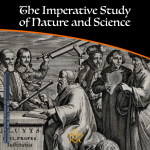 The Imperative Study of Nature and Science At some stage during Freemasonry's Second Degree, the candidate is advised that there is now permitted, something like, the extension of their research into the hidden mysteries of nature and science. Such is an excellent permission and one that each and every Freemason should pursue with awe and passion. |
 Pure Ancient Masonry; P4. A Companion in Rule, Building a better world P4. A Companion in Rule, Building a better world - The four parts of Pure Antient Masonry comprise the ‘body’ Masonic; they are the building blocks of the vital relevance, through enhanced citizenship, wherein the soul of Freemasonry abides. |
 Pure Ancient Masonry; P3. The Master, Building Better Character Part 3: The Master, Building Better Character - Being raised is a transition from knowledge to wisdom. |
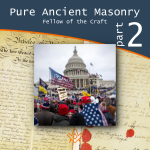 Pure Ancient Masonry; P2. A Fellow of the Craft Part 2: A Fellow of the Craft, Building Better Knowledge. Pure Antient Masonry consists of four parts. ‘Building the Temple’ is the fundamental Masonic allegory for building better people; this must be understood as a seamless whole: |
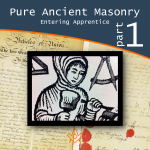 Pure Ancient Masonry; P1. An Entering Apprentice Part 1. An entering apprentice: Building Better Communities; Pure Antient Masonry consists of four parts. ‘Building the Temple’ is the fundamental Masonic allegory for building better people to build a better world |
 Pure Ancient Masonry; Intrduction This series will consider the defining characteristics, lessons and benefits of Three Degrees, the Order of the Royal Arch and when conjoined, Pure Ancient Masonry. |
 The Christianising of British Freemasonries - P4 This concluding article in the series considers the separation of British freemasonries from the Grand Orient of France (GOdF) and maintaining fraternity with the Prussian Grand Lodge of the Three Globes. |
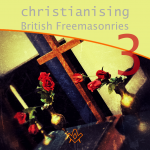 The Christianising of British Freemasonries - P3 Discover the battle for the 'soul' of Masonry. Part 3. French Perdition: ‘…for what fellowship hath righteousness with unrighteousness’? |
 The Royal Arch – ‘the fourth step in regular Freemasonry’ United Grand Lodge of England, has now designated the Royal Arch, the fourth step in regular Freemasonry, it therefore must be concluded that…publications…should now be revised, and based on attracting to the benefits of the four steps. |
 The Christianising of British Freemasonries - P2 How might the battle for the souls of Freemasonries be identified in a way that ensures thriving in the 21st Century? There is no guarantee of the immortality of the soul of Freemasonry! ‘We study the past in order to free ourselves from it.’ (Hariri) |
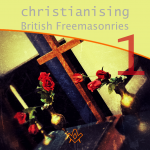 The Christianising of British Freemasonries - P1 This four-part series considers: 1. the separation of British Freemasonries from the Grand Orient of France (GOdF); and, 2. maintaining fraternity with the Prussian Grand Lodge of the Three Globes. |
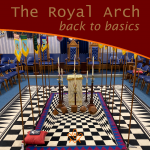 The Royal Arch - Back to Basics In the Royal Arch ceremony, the sojourners are buried with their tools in a vault. The sun, at its highest, provides enlightenment and the principal sojourner is returned to the former companions of his toil |
 The Holy Land and the Holy Sites P4 Fourth instalment of the four-part series, considers ‘masonic’ aspiration and activity regarding the Holy Land and The Holy Sites |
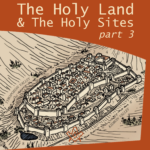 The Holy Land and The Holy Sites P3 Third instalment of the four-part series, considers ‘masonic’ aspiration and activity regarding the Holy Land and The Holy Sites |
 The Holy Land and The Holy Sites P2 The four-part series will consider ‘masonic’ aspiration and activity regarding the Holy Land and The Holy Sites |
 The Holy Land and The Holy Sites P1 In this four-part series, we will consider ‘masonic’ aspiration and activity regarding the Holy Land and The Holy Sites |
 Science and Citizenship: Towards a 21st Century Masonic Mindset. |
 Towards a 21st Century Masonic Mindset: Part 3 ‘Freemasonries’ and the Fourth Industrial Revolution |
 Towards a 21st Century Masonic Mindset: Part 2: ‘Freemasonries’ and Religiosity. |
 Towards a 21st Century Masonic Mindset: Part 1: ‘Freemasonries’ and Governance. |
masonic knowledge
to be a better citizen of the world
share the square with two brothers

click image to open email app on mobile device









